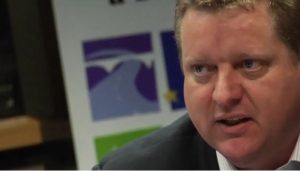World Bank focuses on risk reduction and recovery
 PHILIPSBURG – The involvement of the World Bank with the reconstruction of St. Maarten is starting to take shape, after the World Bank’s representatives – Doekle Wielinga and Edouard Ereno-Blanchet – paid a courtesy visit to interim Prime Minister Leona Marlin-Romeo last Friday.
PHILIPSBURG – The involvement of the World Bank with the reconstruction of St. Maarten is starting to take shape, after the World Bank’s representatives – Doekle Wielinga and Edouard Ereno-Blanchet – paid a courtesy visit to interim Prime Minister Leona Marlin-Romeo last Friday.
Doekle Wielinga is a senior disaster risk management specialist; he is the deputy manager of GFDRR – the World Bank’s Global Facility For Disaster Reduction and Recovery. While the way this agency will go about its assistance to St. Maarten is still somewhat of a mystery to the public, a presentation Wielinga gave in 2010 in Brussels sheds some light on the matter.
GFDRR was established in 2005 when the Indian ocean tsunami triggers heightened global awareness and political commitment.
The timeline Wielinga presented during his presentation shows that St. Maarten lags far behind.
In the view of the GFDDR disaster response takes up the first ten days; in St. Maarten’s case, from September 7 to September 17, 2017. The next phase, disaster relief, takes up to 25 days from the moment a disaster occurs; it involves cash grants, food relief, restoring critical public services, temporary employment generation and emergency needs assessments.
In St. Maarten’s case, this phase thus ended on October 2.
The next phase damage and loss assessment takes up to 45 days after a disaster occurs. This phase therefore ended on October 22.
But since the National Recovery Plan has not been completed yet and since this report would then still have to be merged with the ECLAC-report into one single document, it seems that the process is not running as smoothly as it should.
Get used to this little alphabet soup: PDNA; it stands for Post Disaster Needs Assessment. At this point in his presentation, Wielinga noted that the government must be in the driver’s seat. GFDRR s the facilitator of this process.
The objectives of the PDNA are logical as well as rather lofty. It charts the value of damages to assets and changes or losses in economic flows. It identifies the possible impact of the disaster on the overall performance of the economy, estimates financial, technical and human needs and – last but not least – identifies the capacity of the state “to undertake on its own all recovery, reconstruction and disaster risk management programs and activities.”
At the time of his presentation in 2010, Wielinga’s GFDRR had contributed on average $240,000 to Post Disaster Needs Assessments – from $100,000 for small scale disasters to more than $500,000 for large scale events.
Photo caption: Senior disaster risk management specialist Doekle Wielinga. Photo screenshot.


























